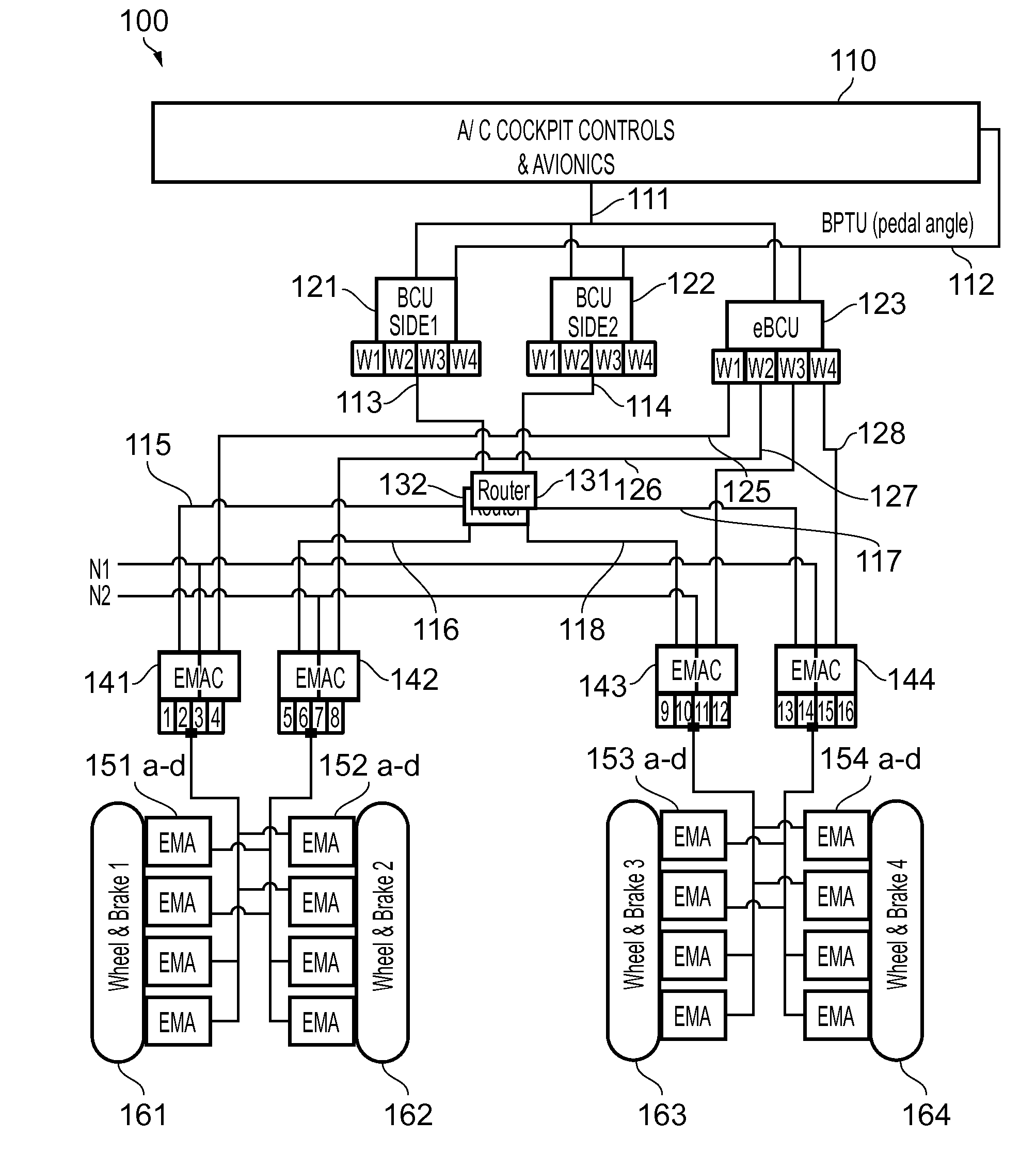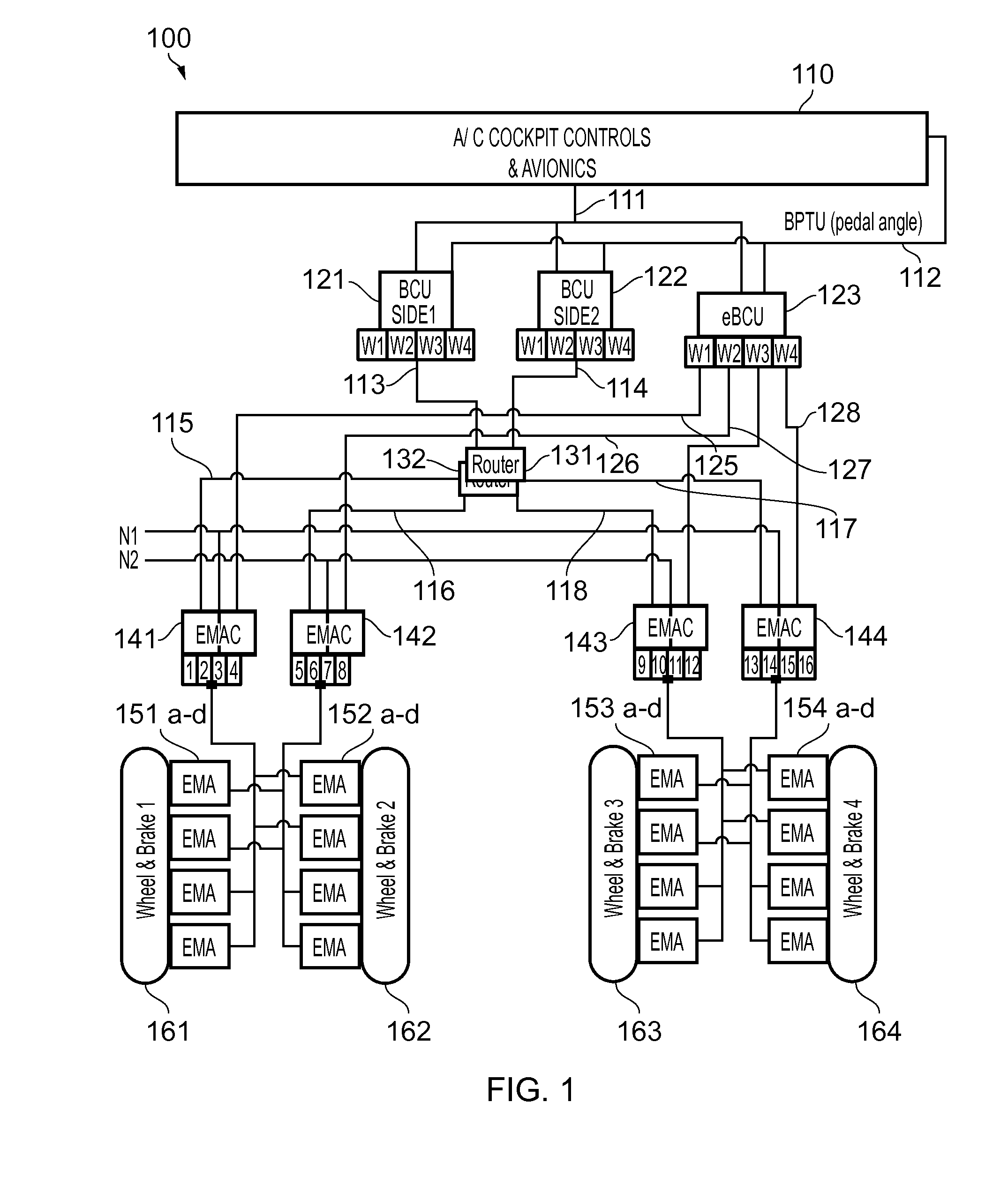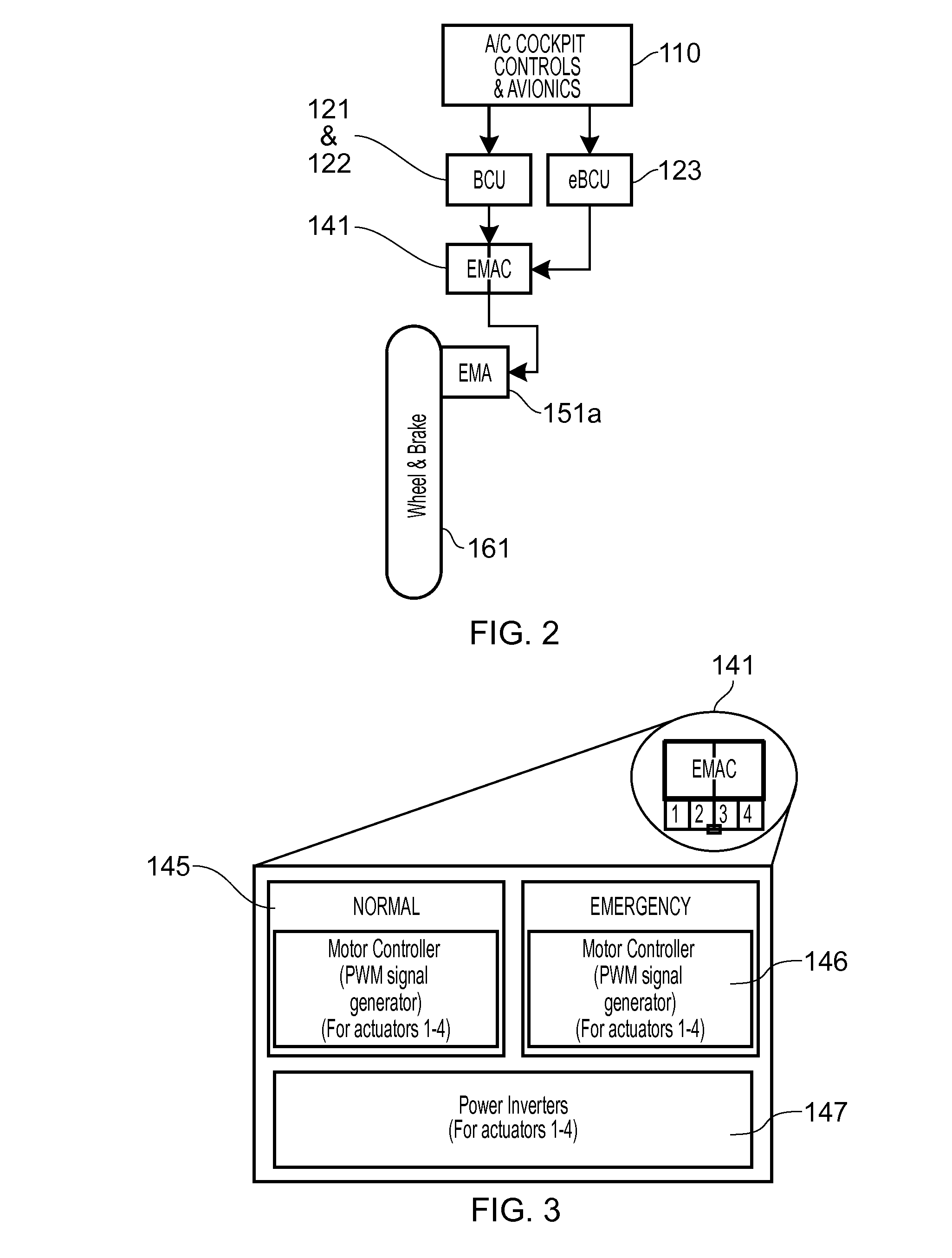Aircraft electric braking system
a technology of electric braking and aircraft, which is applied in the direction of braking systems, aircraft braking arrangements, braking components, etc., can solve problems such as partial or full loss of braking control
- Summary
- Abstract
- Description
- Claims
- Application Information
AI Technical Summary
Benefits of technology
Problems solved by technology
Method used
Image
Examples
first embodiment
[0059]The electrically actuated aircraft braking system 100 of the first embodiment shown in FIG. 1 is configured for an aircraft having two braked main landing gears, one on either side of the aircraft centre line. However, it will be appreciated that the invention described herein relates to any aircraft configuration having braking wheels, including aircraft with more than two main landing gears and / or braked nose landing gear.
[0060]The braking system 100 features centralised avionics. The braking system includes dual redundant brake control units (BCUs) 121, 122 assigned to particular sides, e.g. aircraft avionics network or electrical power network sides (side1, side2, etc.). The BCUs 121, 122 receive input from aircraft cockpit controls and avionics 110 via one or more databuses 111 and analogue and / or discrete signals 112, e.g. from a brake pedal transmitter unit (BPTU) indicating a brake pedal angle. Note that not all signal routes are shown in the figures so as not to obscu...
second embodiment
[0084]FIG. 8 illustrates an electrically actuated aircraft braking system 200 featuring centralised avionics, and “smart” EMAs. The braking system 200 shares many similarities with the system 100 of FIGS. 1-7 and includes the following key differences. In place of the EMAs and remote EMACs of the system 100, the system 200 includes “smart” EMAs in which the normal and emergency EMAC functionality is packaged within the EMA in a single line replaceable unit (LRU). EBPSU functionality is not distributed into the EMACs, instead separate LRU EBPSUs are provided—as EBPSU functionality would need to be duplicated 16 times one for each smart EMA LRU otherwise, although this may of course be used.
[0085]The braking system 200 includes side1 and side2 BCUs 221, 222, which receive input from aircraft cockpit controls and avionics 210 via databus 211. The BCUs 221, 222 interpret signals from the aircraft cockpit controls and avionics 210 and issue braking force commands on a per wheel basis to ...
third embodiment
[0095]FIG. 11 illustrates an electrically actuated aircraft braking system 300 featuring distributed avionics, with “smart” EMACs. The braking system 300 shares many similarities with the system 100 of FIG. 1 and includes the following key differences. In place of the BCUs / eBCU and remote EMACs of the system 100, the system 300 includes “smart” EMACs in which the side1 BCU, side2 BCU and eBCU functionality is packaged within the EMAC in a single line replaceable unit (LRU). The avionics are therefore no longer centralised, but (partially) distributed.
[0096]The braking system 300 includes four smart EMACs 341-344. The smart EMACs 341-344 receive input from aircraft cockpit controls and avionics 310 via databus 311 and analogue / discrete signals 312, e.g. from a brake pedal transmitter unit (BPTU) indicating a brake pedal angle. Routers 331, 332 route digital databus signals from the aircraft cockpit controls and avionics 310 to the smart EMACs via local databuses 315-318. The smart EM...
PUM
 Login to View More
Login to View More Abstract
Description
Claims
Application Information
 Login to View More
Login to View More - R&D
- Intellectual Property
- Life Sciences
- Materials
- Tech Scout
- Unparalleled Data Quality
- Higher Quality Content
- 60% Fewer Hallucinations
Browse by: Latest US Patents, China's latest patents, Technical Efficacy Thesaurus, Application Domain, Technology Topic, Popular Technical Reports.
© 2025 PatSnap. All rights reserved.Legal|Privacy policy|Modern Slavery Act Transparency Statement|Sitemap|About US| Contact US: help@patsnap.com



